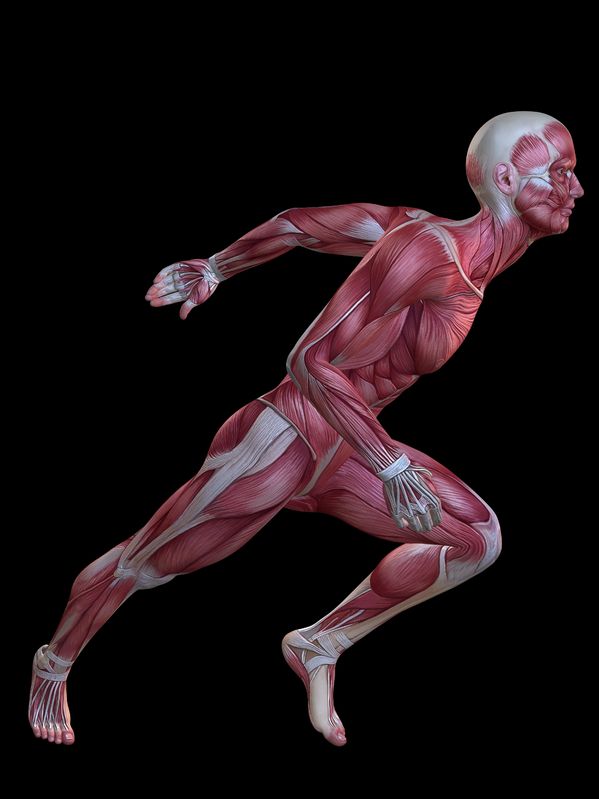Last time, I talked about good technique, the kind where you can be simultaneously strong and relaxed (or better put, effortlessly strong), and how this comes about through engaging the passive strength of connective tissue. Connective tissue is a term which actually refers to lots of different structures within the body. However, all these structures act together to form the structural framework, to which the “other bits” hang on.
Some parts of this structural framework involve connections between components which are close together. For example tendons join muscle to bone, and ligaments join neighbouring bones together (they also hold your internal organs in place within your body).

Many separate muscles covered in fascia, or a single sheet of fascia with many groups of muscle fibres embedded within?
Other parts of this framework connect across big distances, for example fascia, which envelops each muscle, and joins it to its neighbours. When most people see the picture above, they focus on the many, separate muscles (which appear red). However, there is another way of interpreting the picture, which is to see a single, continuous head-to-toe bodysuit of fascia, with muscle fibres embedded within. This bodysuit is translucent, appearing white where it is thick, and as a sheen over areas where the embedded muscle fibres are densely packed.
There are many other examples of connective tissue, but the key idea is that it is continuous and goes everywhere. This means that connective tissue allows things which happen in one part of your body to influence many other areas of your body, over both short and long distances. As we’ll see next time, this can be both good and bad.
